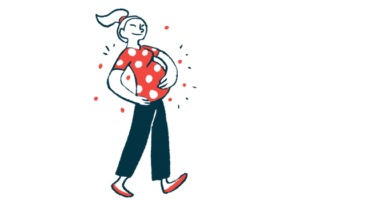Living with the fear of aplastic anemia while managing PNH
Despite the uncertainty, I move forward with strength and hope

When you live with paroxysmal nocturnal hemoglobinuria (PNH), you learn early on that no two days are ever the same. Some days, I wake up with energy and hope. Other days, I’m reminded that this rare disease is unpredictable — it can shift and change without warning. One of the biggest fears that sometimes lingers in the back of my mind is the possibility of developing aplastic anemia, another serious bone marrow disorder often linked to PNH.
When I was diagnosed with PNH back in 2017, I had already experienced a life-threatening symptom: a blood clot in my lungs. That experience taught me just how fragile life can be, but it also made me stronger. Still, as the years have gone by, I’ve learned more about the connection between PNH and aplastic anemia, and that knowledge brings a new layer of anxiety. It’s a reminder that PNH isn’t a one-dimensional disease; it’s complex, evolving, and deeply tied to the bone marrow that produces our blood cells.
Aplastic anemia happens when the bone marrow stops making enough new blood cells. For someone already managing PNH, that’s an especially heavy thought. I often worry: What if my counts drop too low? What if fatigue or shortness of breath becomes something more serious? These aren’t just distant possibilities — they’re real risks that require regular blood monitoring and close communication with my hematologist.
Leaning in
Living with that kind of uncertainty can be emotionally exhausting. I try my best not to let fear take over my daily life, but there are moments — like when I’m waiting for lab results — when the worry sneaks in. I think about my children, who are now teenagers, and how much I want to stay strong and present for them. They’ve watched me navigate PNH with courage, but I sometimes wonder how they’d handle it if my health declined because of something like aplastic anemia. It’s a mother’s fear that goes beyond the medical side of things; it’s personal, emotional, and human.
Over time, I’ve learned that knowledge can be both empowering and comforting. I read medical updates, ask my doctor questions, and stay proactive with my care. My hematologist reminds me that regular monitoring helps catch changes early, and that treatments for both PNH and aplastic anemia have improved greatly in recent years. Hearing that gives me hope.
I also lean on community — connecting with others living with PNH who understand the emotional side of these fears. Sometimes, just knowing you’re not alone makes a world of difference. We talk about the “what-ifs,” but we also share victories: stable lab results, improved treatment responses, or simply getting through another day feeling OK.
Living with PNH means accepting the unknowns, but it doesn’t mean living without hope. My fear of developing aplastic anemia will probably never go away completely, but I remind myself that fear and strength can coexist. Each day that I stay proactive, advocate for myself, and hold on to faith, I’m proving that living with uncertainty doesn’t mean living in defeat; it means living with courage, one lab result at a time.
For more information about PNH and aplastic anemia, visit:
Note: PNH News is strictly a news and information website about the disease. It does not provide medical advice, diagnosis, or treatment. This content is not intended to be a substitute for professional medical advice, diagnosis, or treatment. Always seek the advice of your physician or other qualified health provider with any questions you may have regarding a medical condition. Never disregard professional medical advice or delay in seeking it because of something you have read on this website. The opinions expressed in this column are not those of PNH News or its parent company, Bionews, and are intended to spark discussion about issues pertaining to paroxysmal nocturnal hemoglobinuria.








Leave a comment
Fill in the required fields to post. Your email address will not be published.